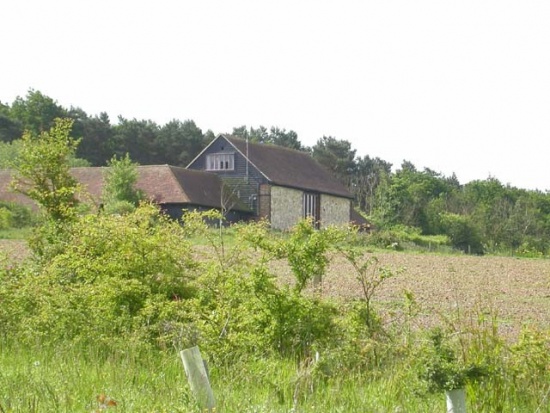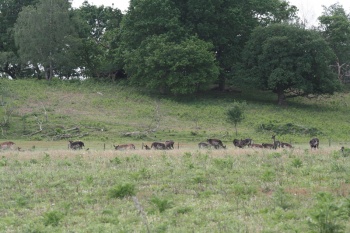Overview
Despite only being created in 1989 the 170 ha Pulborough Brooks reserve is now one of the most important and popular inland wetland sites in southern England.
In a very short time careful management of water levels and controlled grazing have created an area of wet grassland with a good range of breeding birds and internationally important numbers of wintering waterfowl.
In addition to water meadows there are also areas of drier grassland with hedgerows, heathland and deciduous woodland. With excellent visitor facilities this is a reserve with much to offer the birder at any season.
Birds
Notable Species
Northern Lapwing, Common Snipe and Common Redshank all breed within the reserve although they are in decline as these species are throughout Britain. Waterfowl present in summer include Mute Swan, Canada Goose and Mallard as well as the much more local Garganey, Northern Shoveler and Common Teal. Mandarin Duck are frequent visitors from the nearby Arundel Wetland Centre.
Passerine breeders include Yellow Wagtail, Meadow Pipit and Reed Bunting in the meadows and Nightingale in the scrub and woodland. All three British woodpeckers can be seen and a variety of warblers breed in the various habitats including Common Grasshopper Warbler, Sedge Warbler, Garden Warbler and Willow Warbler as well as Common Whitethroat and Common Chiffchaff.
Woodcock and European Nightjar breed in the nearby heathland. Eurasian Sparrowhawk and Common Kestrel can be seen all year with Northern Hobby over the reserve in summer.
Passage periods bring Marsh Harrier, waterfowl, sometimes including wild geese, and a variety of waders such as Whimbrel, Spotted Redshank and Ruff. A small number of Ruff are usually present through the winter and one or two Jack Snipe are also seen annually.
This is a regular haunt of Bewick's Swan in winter, sometimes joined by one or two Whooper Swan. Recent years have seen increasing numbers of geese at Pulborough with Greylag Goose the most numerous, Greater White-fronted Goose regular in smaller numbers and Bean Goose occasionally recorded.
Ducks wintering here include significant numbers of Eurasian Wigeon and Northern Pintail and Goosander appears in some winters. Raptors at this season include Peregrine Falcon, Merlin and Hen Harrier.
Check-list
Birds you can see here include:
Grey Heron, Mute Swan, Bewick's Swan, Greater White-fronted Goose, Greylag Goose, Canada Goose, Common Shelduck, Mandarin Duck, Eurasian Wigeon, Gadwall, Common Teal, Mallard, Northern Pintail, Garganey, Northern Shoveler, Goosander, Western Marsh Harrier, Hen Harrier, Eurasian Sparrowhawk, Common Kestrel, Merlin, Northern Hobby, Peregrine Falcon, Red-legged Partridge, Common Pheasant, Water Rail, Common Moorhen, Eurasian Coot, Little Ringed Plover, Ringed Plover, Eurasian Golden Plover, Northern Lapwing, Ruff, Common Snipe, Jack Snipe, Eurasian Woodcock, Black-tailed Godwit, Whimbrel, Spotted Redshank, Common Redshank, Common Greenshank, Green Sandpiper, Wood Sandpiper, Common Sandpiper, Black-headed Gull, Common Woodpigeon, Western Barn Owl, Little Owl, European Nightjar, Common Swift, Green Woodpecker, Great Spotted Woodpecker, Lesser Spotted Woodpecker, Eurasian Skylark, Sand Martin, Barn Swallow, Western House Martin, Meadow Pipit, Yellow Wagtail, Pied Wagtail, Common Wren, Dunnock, Eurasian Robin, Common Nightingale, Common Redstart, Whinchat, European Stonechat, Northern Wheatear, Eurasian Blackbird, Fieldfare, Song Thrush, Redwing, Mistle Thrush, Common Grasshopper Warbler, Sedge Warbler, Common Whitethroat, Garden Warbler, Common Chiffchaff, (rare W), Willow Warbler, Spotted Flycatcher, Long-tailed Tit, Marsh Tit, Blue Tit, Great Tit, Common Treecreeper, Common Jay, Common Magpie, Eurasian Jackdaw, Rook, Carrion Crow, Common Starling, Chaffinch, European Greenfinch, European Goldfinch, Eurasian Linnet, Common Bullfinch, Yellowhammer, Reed Bunting
Other Wildlife
Great Crested Newt Triturus cristatus has recently been discovered on the reserve, Grass Snake Natrix natrix is common and Roe Deer Capreolus capreolus and Fallow Deer Cervus dama are sometimes seen.
The scarce Club-tailed Dragonfly Gomphus vulgatissimus is one of the many insect species to be found in the area which is also a haven for a variety of waterside plants.
Site Information
Access and Facilities
The reserve entrance is situated on the A283 about 3km north of Storrington in West Sussex. This very popular reserve has a car park, good paths and hides and a well-equipped shop, tea room and visitor centre.
Grid Ref: TQ058164
Nearby Sites
- Greatham Bridge: There is a small car park beside the river Arun [1]
- Amberley Wildbrooks [2]
- Arundel Wetland Centre [3]
Contact Details
Tel: 01798 875851
External Links
Maps
- Pulborough Brooks on Streetmap
- Greatham Bridge on Streetmap
- Amberley Wild Brooks on Streetmap
- Arundel WWT on Streetmap
Content and images originally posted by Steve
Reviews
Jaxman's review
Pros
- variety of habitats means variety of birds
Cons
- can't think of any
florall's review
A great place to visit all year round. for those who are disabled but can walk a bit, there are benches very frequently to rest up on. Beautiful bit of countryside as well.
Pros
- Many different habitats
- good disabled access
Cons
- Are there any?
davesmith's review
Spent several hours just wandering, numerous species seen, easy paths meant good access for all. Ideal for youngsters to enjoy the wildlife, well laid out site, gives a real sense of natural countryside, hedgerows, field sites, water holes, sedge and reed beds. plus the estuary areas give a well rounded experience. Bonus was the Barn Owls hunting to feed the three babies. Paths meander off of main trails so spotting sites are numerous and varied.
Pros
- Great variety of habitat
- easy access
- great scenery
Cons
- none noticed
teamsaint's review
Pulborough Brooks is a geat reserve. There are thousands of wildfowl when you look over the lakes in winter. Lapwings are also everywhere. Sometimes as many as 5000 of them take flight at the appearance of a Peregrine that are common on the reserve. Lesser Spotted Woodpeckers and Hawfinches are often seen on the feeders outside the visitor centre with the more commoner finches and tits. As well as for birding the brooks are good for mammals, when we went we saw a Fox, 2 Stoats and 5 Fallow Deer. Waders are common here and our visit brough Snipe and Ruff.
Pros
- Birds everywhere!!





